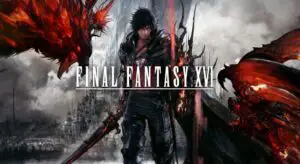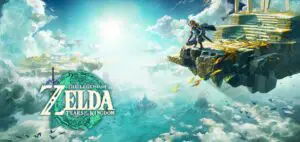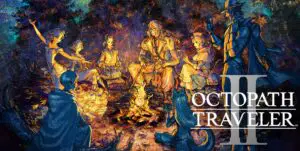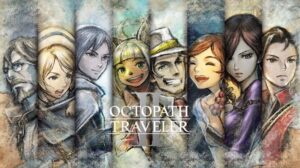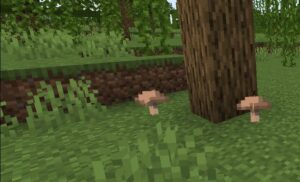Chained Echoes Review
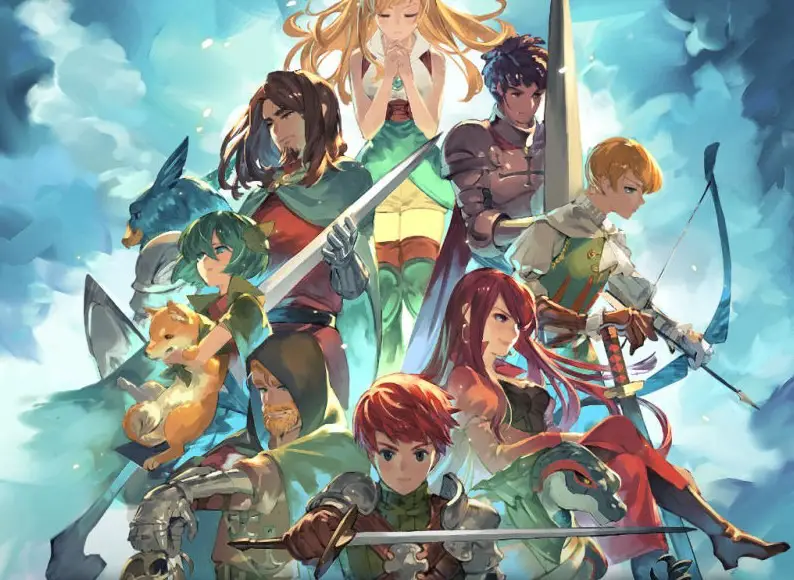
This is a spoiler-free Chained Echoes Review, only providing some minor early-game story details.
The indie scene is certainly an interesting beast, often showing against the odds that low-budget passion projects can rival the work of triple-A studios with a manpower advantage in the hundreds. Chained Echoes, a turned-based RPG in the classic graphical style of the SNES era, is one such example. As a love letter to an era continually written off, it starkly reminds us that turn-based games have not died. Maybe Chained Echoes proves they never will.
Chained Echoes is a virtually single-handed venture from indie developer Matthias Linda. Some seven years in the making, Linda was openly inspired by the golden period of the 1990s that gave us some of the best the RPG genre had to offer. Influences from the Final Fantasy series (particularly V and VI), Chrono Trigger and Xenogears are found regularly and unashamedly. Nostalgia for these titles certainly helps Chained Echoes along, but it easily stands up on its own merit with polished gameplay and plenty of clever, novel ideas.
We’re quickly thrown into a steampunk setting and a story that hits that ground running. Young, talented tech-whizzkid Glenn undertakes a risky mission with his group of mercenaries that promises a financial windfall beyond their wildest dreams. However, the mission inadvertently leads them to discover and set off a powerful magical weapon that destroys an entire region and claims many lives.
Fear of the weapon triggers a tense peace to be bartered by the warring nations of Valandis, which is inevitably tested by the ulterior motives and political aspirations of their leaders. Generally, the tale follows Glenn as he tries to learn more about the weapon and repent for the untold damage he did in the game’s opening.
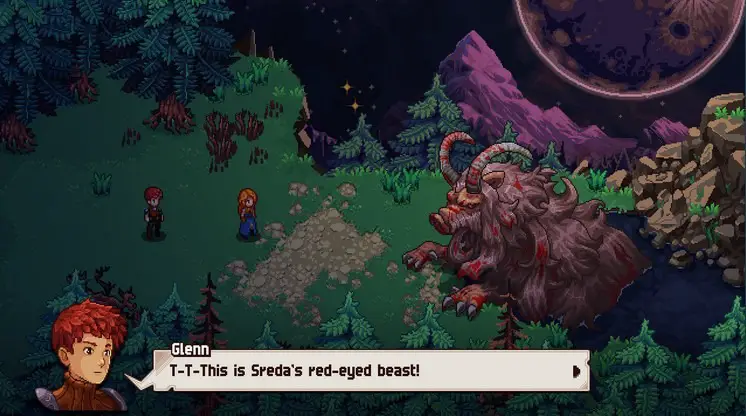
However, it’s not long before we are introduced to a far larger cast of interesting characters, who fit into tried and tested archetypes whilst remaining likeable and complex. There’s the rebellious secret princess, the self-centred thief, the cold-blooded mercenary and the wise old man who knows more than he lets on. As familiar as these tropes may be, the characters have engaging backstories and multi-layered motivations once Chained Echoes starts to scratch below the surface.
There’s also a really interesting, well-written story that packs plenty of surprises and is propped up by strong world building. As you progress further into the narrative, it becomes increasingly clear that Matthias Linda didn’t cut any corners in creating a deep lore that can be explored in further detail if you want to find more of the world’s secrets. I did feel that a few important story beats moved a little faster than felt natural, but I was thoroughly invested for the majority of the 30-odd hours taken up by the main quest.
In respect of the gameplay, Chained Echoes’ turn-based battle system is excellent, possessing elements that superbly blend tradition with innovation. Each character has specific skills tailored to their battle style, covering all the main classes you might expect. Across the roster you’ve got a solid variety of roles like warrior, thief and various mage characters. Between them all, there are lots of options to build your team in many different ways, and you can also swap out characters in the middle of battle for added variation.
Certain characters also possess bespoke gameplay quirks that can be useful in certain situations. For instance, Sienna the thief may randomly activate a powerful attack if she uses particular skills, and Ba’thraz the mercenary can summon weapons that cause him to grow in power if the right attack types are used repeatedly. There’s also a bizarre novelty character who can eat enemies once they are sufficiently low on health to learn new skills.
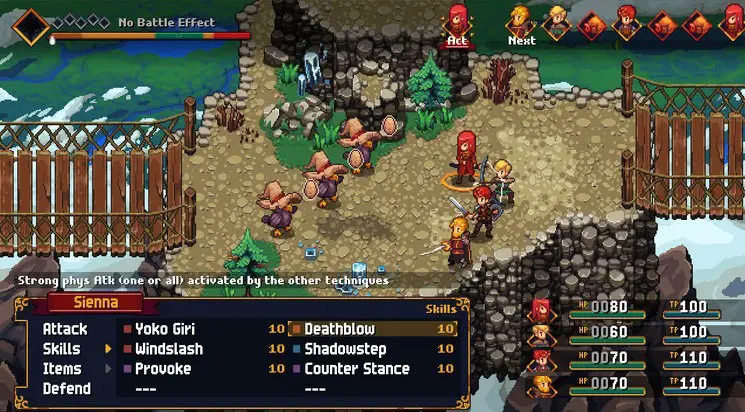
The most interesting element of the battle system is the Overdrive meter, which gradually fills up when performing actions or getting hit. The goal is to keep the gauge in the fairly generous green sweet spot, which will bolster your skills whilst reducing their cost. Indulge too far and you’ll overheat, causing you to take more damage. The meter can be brought back down by using a specific randomly-cycled skill type, swapping in a new character or executing a Super Move that is gradually charged in its own gauge.
This feature works really well, adding a neat strategic element to battle that encourages you to mix up your attack patterns, switch your team around and generally act with some moderation. There’s also a risk-reward balance, where you may have to decide between trying to finish off the boss before its next move or wasting your attack opportunity to get your Overdrive back under control.
Despite its old-school roots, one of the most fundamental RPG elements is missing from Chained Echoes. Characters do not actually receive any EXP from battles, and do not level up in the traditional sense. Instead, levels are effectively gained by earning Grimoire Shards, which are handed out for defeating bosses. A Grimoire Shard gives every character the option of a new combat skill, a passive skill or a stat boost.
Battles do award SP, but this is only used to strengthen skills, which all have three levels each. The result is that character progression is largely controlled by your progress through the game. Arguably this is true of most JRPGs, where EXP scales according to progress so you’re usually at the level roughly intended for that point. However, I wasn’t a massive fan of abolishing the EXP feature altogether. Some may find it appealing, as it disincentivises grinding, but personally I always love watching my characters level up.

Admittedly, this bugbear doesn’t make that much difference in the grand scheme of things, but I also found that once you have gotten used to a few of the characters’ strengths, most boss battles could be won with exactly the same tactics. After a while, a few of my party members simply became surplus to requirements.
The all-important Grimoire Shards are mostly provided for winning specific battles, but they can also be earned on the Rewards Board, a nifty concept where in-game achievements can be chained together. These achievements can range from opening a sufficient number of treasure chests in an area, to defeating the difficult mini-bosses that roam the world. Once enough consecutive achievements are linked, a Grimoire Shard can be claimed, or another important item called Sacred Water.
I loved the Rewards Board, where it’s highly satisfying to figure out which tasks can realistically be done to string together the longest chain. Given the significance of Grimoire Shards, it is effectively Chained Echoes’ way of awarding levels for uncovering as much content as possible, which is a cool touch.
Supplementing the battle system, and the experience in general, is a superb soundtrack. This is the only part of Chained Echoes that was not developed by Linda himself, and it shines throughout. The standard battle music Calling Upon Bravery never felt repetitive and the various boss tracks are suitably epic.
Elsewhere, the collection of overworld music invariably provides a wonderful accompaniment to your explorations. The distinct character of these areas is always captured in the music, helping Chained Echoes present the world as a wonderfully weird and varied place. To give an idea of the musical quality, check out Never Forget Our Promise and Flower Fields of Perpetua from the soundtrack.
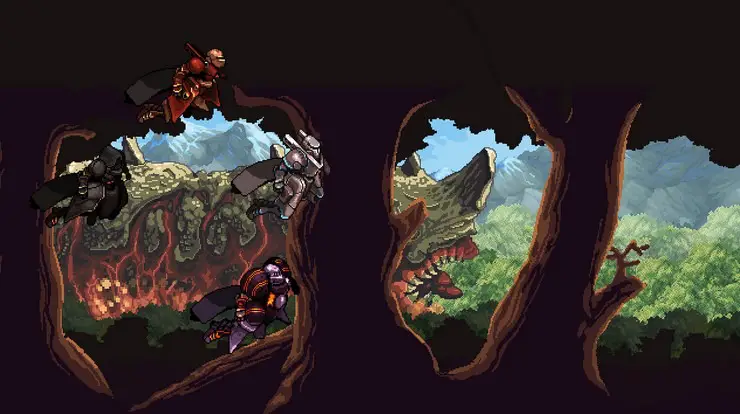
Unlike most RPGs from the inspirational 90s era, battles are (mercifully) not random. Instead, they alternate between easily-avoidable enemy mobs and groups that block your path and are mandatory to progress further. The map design impressively blends an ideal number of battles with exploration and puzzles. There are countless little secret paths to stumble upon, and it’s a pleasure to try and find everything on offer within each distinct well-designed region.
The world isn’t overwhelmingly big, but at a certain point in Chained Echoes we are introduced to Sky Armors. Inspired by Xenogears’ mech-like Gears, these can be boarded by the simple press of a button, provided certain conditions are met.
Old maps suddenly become more easily explored, and weaker enemies can be swatted away like flies. It’s an exciting prospect that encourages backtracking without it feeling like a chore. Moreover, the thoughtful design of further areas still ensures you must regularly switch between on-foot combat and mech combat. I daresay the balance of the two combat styles is achieved even better than Xenogears itself, which I always felt was a bit too lop-sided towards Gears. I digress.
A few minor complaints don’t diminish the reality that Chained Echoes is one of the finest indie achievements for many years. Matthias Linda has provided an RPG that could easily be mistaken for a mothership Final Fantasy entry from perhaps its best generation. As those who grew up in the era will appreciate, that is high praise indeed.
Score: 9/10
Chained Echoes is a nostalgic tribute to a wonderful era of JRPGs, but the polished and balanced gameplay provides an excellent modern twist. The strong story, likeable cast of characters and brilliant soundtrack all help cement it as a true indie triumph.
Positives
+ Fun, strategic turn-based battle system
+ Engaging cast of strong characters
+ Interesting story with impressive lore and world building
+ Well-designed maps that are a joy to explore
+ Terrific soundtrack
Negatives
– Levelling system feels a little confined
– Some parts of the story could use more breathing room


